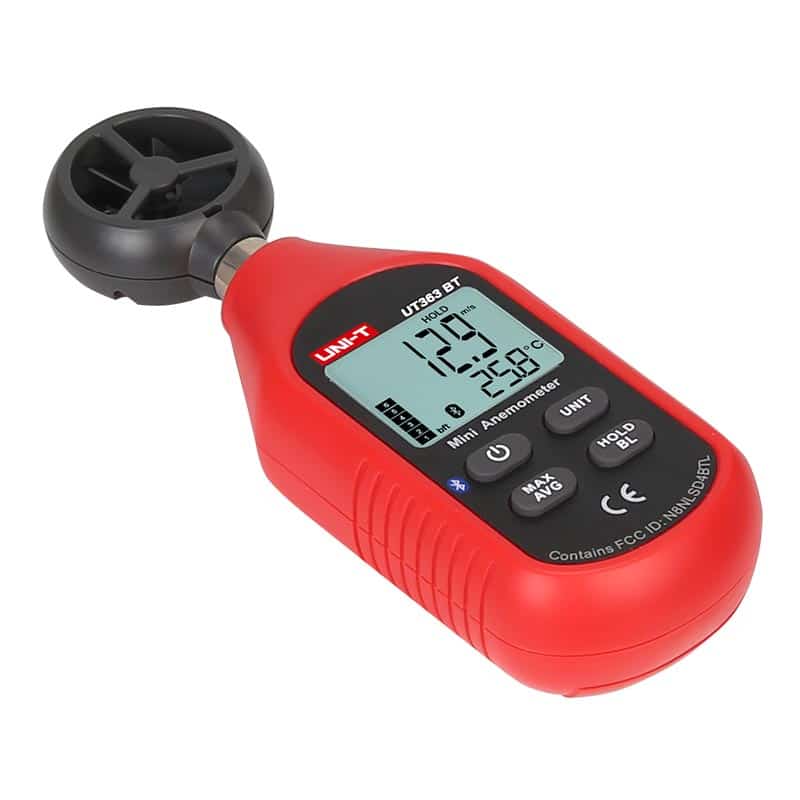How to Preserve and Care for Your Anemometer to Make Sure Long Life
All You Need to Learn About Anemometers: Just How They Work, Why They Issue, and Where to Utilize Them
Anemometers, though usually neglected in the world of scientific instruments, play a critical role in various fields, using beneficial understandings right into wind speed and airflow patterns. As we dig into the ins and outs of anemometer modern technology, we will certainly uncover the inner workings of these devices, their importance, and the essential factors to consider when picking the best anemometer for specific applications.

Anemometer Fundamentals
A crucial instrument utilized to gauge wind rate and instructions, the anemometer plays a vital role in weather forecasting and numerous markets. An anemometer generally is composed of three or 4 cups that turn in the wind, a vane that points right into the wind, and sensing units to track the motions or turnings.
There are various types of anemometers offered, including mug anemometers, vane anemometers, hot-wire anemometers, and sonic anemometers, each with its distinct attributes and applications. Mug anemometers are commonly utilized for fundamental wind rate dimensions, while vane anemometers are preferred for directional measurements.
Principles of Anemometer Procedure
Structure on the fundamental understanding of anemometer essentials, the concepts of anemometer procedure elucidate the mechanics behind wind speed and direction measurements. Anemometers operate the principle of air flow influencing a sensing unit, creating it to revolve. Mug anemometers, for example, have three or more cups that record the wind, triggering them to spin quicker as the wind speed increases. The rotation speed is after that exchanged a wind rate dimension. Vane anemometers, on the various other hand, make use of a tail or a probe that straightens itself with the wind instructions, providing a dimension of wind instructions based upon the alignment of the sensing unit. Hot-wire anemometers rely upon a warmed wire that cools off as wind overlooks it, with the price of cooling identifying the wind speed. Ultrasonic anemometers measure wind speed and instructions by assessing the moment it takes for ultrasonic signals to travel in between transducers. Understanding these principles is important for reputable and precise wind measurements in various applications.
Significance of Anemometers
Anemometers play an essential duty in determining wind speed and instructions, providing important information for climate forecasting, environment studies, environmental tracking, and aeronautics procedures. Meteorologists rely on anemometers to gather accurate wind information, helping them understand weather patterns, forecast tornados, and problem timely warnings to the public. Wind ranch drivers utilize anemometers to assess wind conditions and maximize electrical power manufacturing from wind turbines.
Applications Across Numerous Industries
Applications of anemometers extend across varied markets, showcasing their flexibility and energy beyond meteorology. In the renewable resource sector, anemometers play an essential duty in examining wind conditions for wind ranch placements, ensuring anonymous ideal power production. Industries like building and construction and mining use anemometers to monitor wind speeds, crucial for security protocols, particularly when functioning at heights or in open-pit mines where solid winds can pose dangers. Anemometers are also essential in the aeronautics industry, helping pilots in understanding airspeed and wind direction for secure liftoffs and landings. The maritime market take advantage of anemometers for ship navigation, assisting seafarers anticipate climate changes and change routes appropriately. In agriculture, anemometers assist farmers in handling crop splashing by supplying real-time information on wind speed to avoid drift. Moreover, anemometers locate applications in heating and cooling systems to maximize air movement and boost power effectiveness in buildings. The diverse use situations of anemometers emphasize their relevance across various industries, highlighting their vital duty in boosting functional safety and security and efficiency (anemometer).

Picking the Right Anemometer for Your Demands
Selecting the suitable anemometer customized to your details needs is important for obtaining precise wind rate and instructions dimensions. When picking an anemometer, take into consideration factors such as the intended application, required measurement range, ecological conditions, and preferred features. For basic functions, a mug anemometer is ideal for gauging wind rate, while a vane anemometer provides wind direction information. Hot-wire anemometers are perfect for low airspeed measurements, and ultrasonic anemometers provide high accuracy and sturdiness.

Conclusion
In final thought, anemometers play an important duty in measuring wind speed and instructions throughout various markets. It is vital to consider the relevance of anemometers in order to make enlightened decisions when picking the most ideal gadget for determining wind conditions.
There are various types of anemometers readily available, including her comment is here cup anemometers, vane anemometers, hot-wire anemometers, and sonic anemometers, each with its special attributes and applications. Cup anemometers are typically utilized for standard wind rate measurements, while vane anemometers are favored for directional measurements. Hot-wire anemometers are appropriate for reduced airspeeds, and sonic anemometers are perfect for high-precision measurements in research study and industrial setups.Structure on the fundamental understanding of anemometer essentials, the concepts of anemometer operation illuminate the auto mechanics behind wind rate and instructions dimensions. For basic functions, a mug anemometer is suitable for determining wind rate, while a vane anemometer supplies wind instructions data.